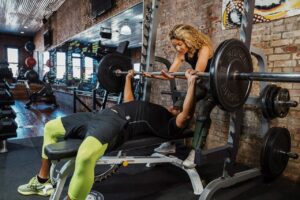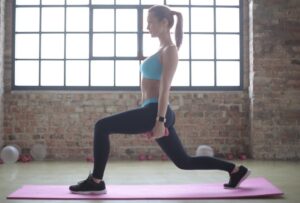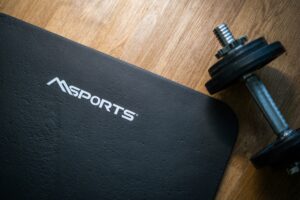You’ve come to the right place if you’re looking for an upper glute workout to develop a set of strong, round buttocks.
Today’s article will outline the upper glutes, what muscles you must train, and the best tips for growing the glutes and building that Shelf Butt. We will also review 10 of the best upper butt exercises you should add to your routine.
Upper Glute Anatomy
The muscle that makes up the upper glute area is called the gluteus medius (1). It is one of three muscles that make up the buttocks. The other two muscles are the gluteus maximus and gluteus minimus.
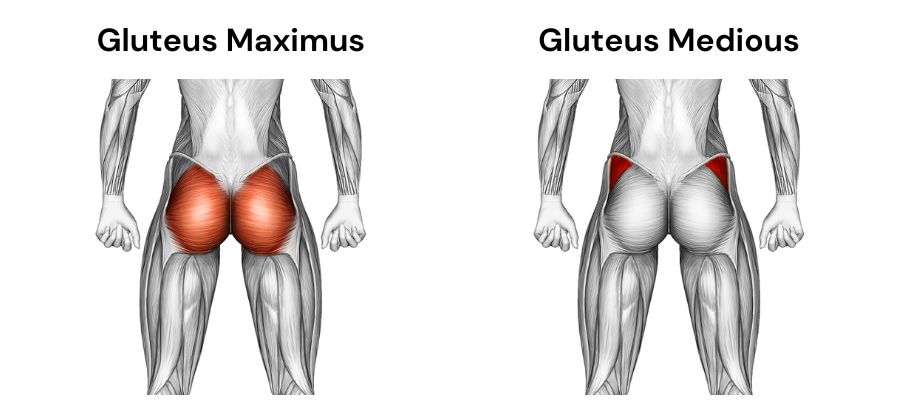
Your glute medius is primarily responsible for keeping your pelvis stable during various activities, such as walking or running (1). The medius is also the prime hip abductor. It produces most of the force necessary for performing activities like lifting your leg to the side (laterally).
The third function of the glutes is medial hip rotation: turning your thigh in (1).
The Benefits of Strong Upper Glutes
Strong upper glutes are essential for your health, functionality, and performance at the gym. The muscle plays a crucial stabilizing role at the pelvis and supports your body throughout most activities: the squat, pull-up, overhead press, etc.
Developing the glutes is also necessary for your everyday life. Poor hip alignment would make you less capable of carrying out simple tasks, and excessive pelvis movement could increase the risk of spinal injury.
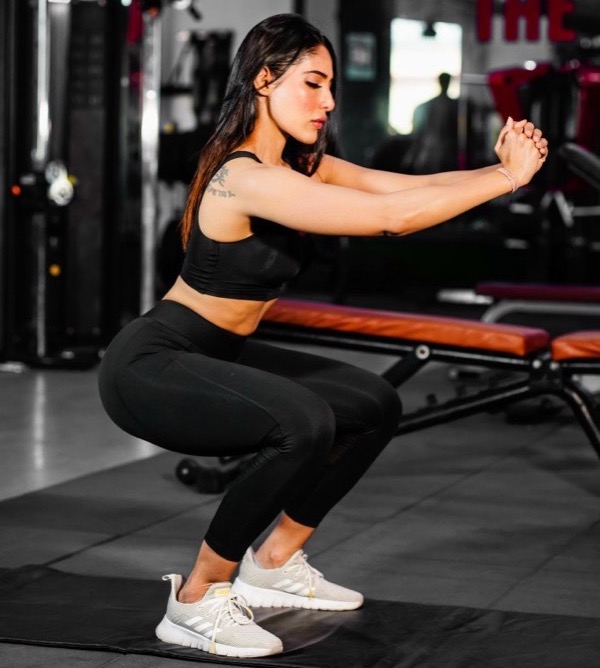
Did you know?
- Your glute medius keeps your pelvis leveled during activities where one foot lifts off the ground (walking, running, single-leg activities, etc.).
- The glutes produce hip abduction (e.g., bringing one leg to the side) regardless of hip position and body alignment.
- Without the glutes, you would be unable to stand upright or walk due to the lack of hip stability or alignment. Bringing one leg forward would immediately cause the opposite side of your pelvis to drop.
How to Increase Your Shelf Butt (4 Invaluable Tips)
1. Integrating Upper Glute Exercises into Your Workout Plan
Due to their position and anatomy, the glutes are almost always active. Still, growing the upper glutes and strengthening the muscle depends on proper exercise selection.
The great news is that you can pick from various upper butt exercises and use resistance bands, machines, barbells, or your body weight for resistance.
Glute exercises are only effective when you’re focusing on the correct muscles. Pick weights you can handle comfortably, perform each repetition smoothly, train with a full range of motion, and feel the upper butt area working to ensure optimal development.
2. Aim For Gradual Progression
Like any muscle in the body, the glutes benefit from progressive overload: increasing your training difficulty over time.
Your upper glutes might initially respond to the slightest tension, but you must challenge yourself to keep growing and strengthening the area.
Doing more repetitions is the simplest way to do that because the gluteus medius is small, and you can’t isolate it with much weight. You can focus on lifting more weight but on compound exercises like the hip thrust.
3. Eat Enough Calories
You can strengthen the glutes and reap the associated benefits by only focusing on your fitness. But, people interested in developing the upper glutes and attaining a round shelf butt must eat enough calories to support healthy weight gain (2).
4. Bump Your Protein Intake
Aside from eating enough calories to promote weight gain, you must pay careful attention to your food choices and get enough protein. The nutrient provides the building blocks (amino acids) your body needs to build muscle and repair damage after physical activity (3).
According to most sources, we should aim for 0.7 to 1 gram of protein per pound of body weight (4). High-protein foods include poultry, fish, meat, eggs, cottage cheese, and protein powder supplements.
Hevy Workout Tracker
Create your own upper glute workout with Hevy, and track your progress. Join +2M athletes.

For Personal Trainers
Personal trainer software to build workout programs for your clients, and track their progress.
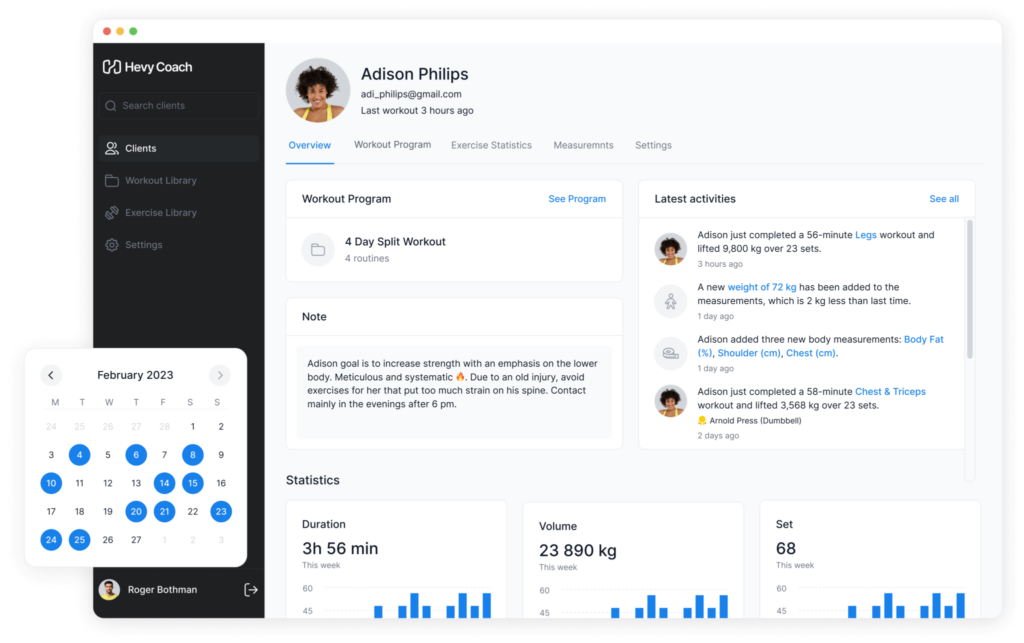


Tracking your workouts is also a great way to improve the strength and size of your glutes. Using a workout tracker can help you stay on track and motivated toward your goals.
Upper Glute Exercises For Growth and Strength Gain
One function of the gluteus medius is hip abduction––moving your legs away from the midline of your body. Any activity that includes lateral leg raises will train the area.
The good news is that other exercises also develop the glutes, and you don’t have to limit yourself. Here are the best glute exercises:
1. Lateral Lunge (Squat)
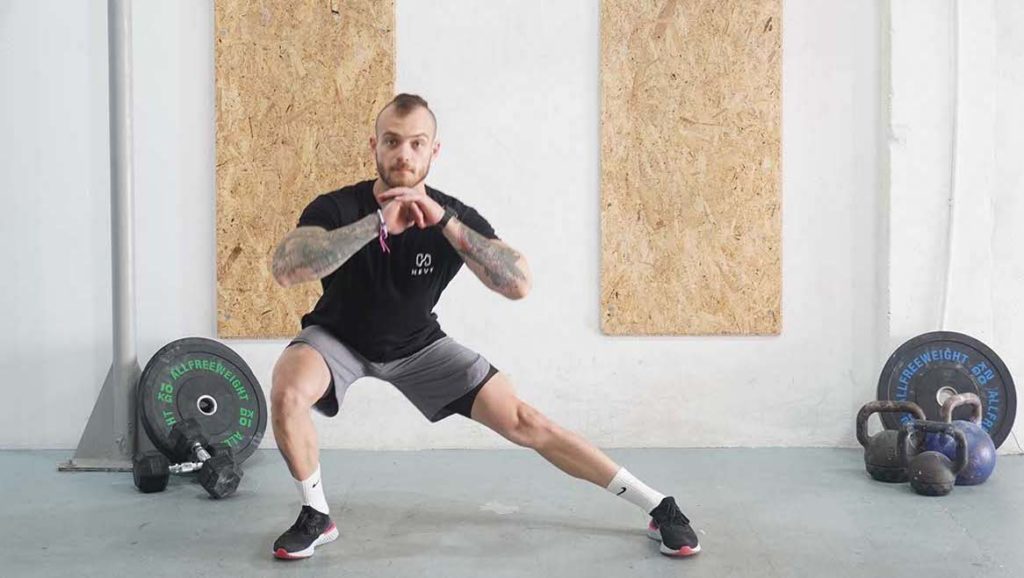

How to do it:
- Stand tall with your feet shoulder-width apart.
- Bring your shoulders back and engage your abs.
- Lift your right leg laterally, plant the foot on the floor, and immediately squat by bending your right knee.
- Descend until your thigh is almost parallel to the floor, and hold for a moment.
- Push yourself up through your right heel and bring the leg in as you exhale.
- Take another breath and bring your left leg out in the opposite direction, performing the same movement.
- Squat to the left and right until you’re done.
2. Hip Thrust
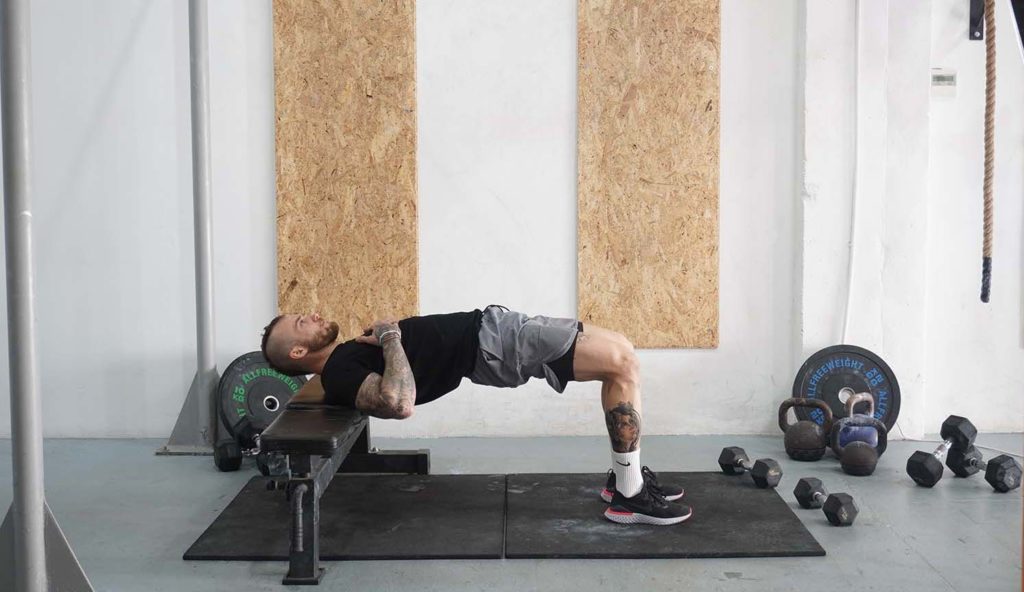

How to do it:
- Get down on the floor and place your upper back on a flat gym bench.
- Bend your knees and plant your feet on the floor.
- Take a breath and engage your abs.
- Squeeze your glutes and push through your heels to lift your hips to the ceiling.
- Push until your hips align with your knees and shoulders.
- Pause for a moment and slowly lower your butt to the floor as you exhale.
- Inhale again and repeat.
You can make hip thrusts more challenging with a resistance band or barbell. For example, you can set yourself up and position a loaded barbell against the crease of your hips. Hold the bar for balance and perform the exercise as you usually would.
Alternatively, do a single-leg hip thrust by supporting yourself on one foot at a time or the Kas glute bridge.
Related article: Top 15 Gluteus Minimus Activation Exercises
3. Lateral Leg Raises
How to do it:
- Stand tall with your hands on your hips and shoulders back.
- Engage your abs, squeeze your glutes, and take a breath.
- Lean slightly to the left, taking your weight off your right side.
- Lift your right leg laterally as high as possible in one fluid and controlled motion.
- Hold the top position for a moment and bring the leg in as you exhale.
- Once finished training the right side, lean slightly to the right and do the same number of reps for your left leg.
You can make lateral leg raises more challenging by wrapping a looped resistance band around your thighs (just above the knees) or ankles. The movement is known as banded hip abduction.
If you struggle with balance, you can hold onto something while doing the exercise.
4. Bulgarian Split Squat
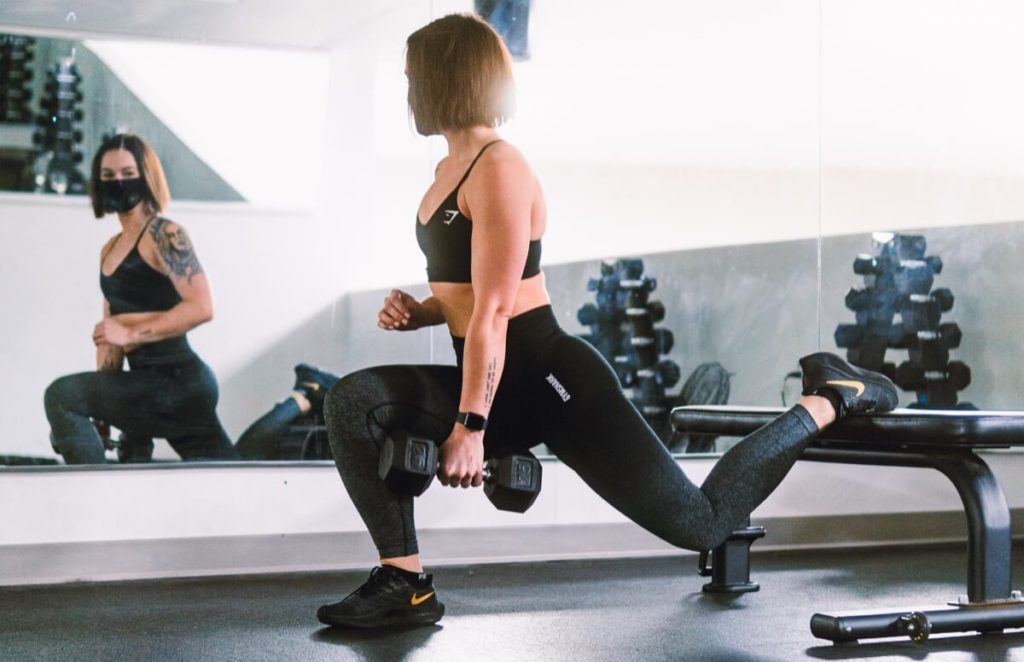

How to do it:
- Face away from a gym bench, plyo box, or chair.
- Bring one leg back and place the foot on the elevated object.
- Place your hands on your hips, engage your abs, and bring your shoulders back.
- Descend into a squat by bending your front knee. Your knee should be over your toes at the bottom position.
- Move down as much as you can––ideally, until your back knee is an inch or two from the floor.
- Press through the front heel and bring yourself to the top as you exhale.
- Inhale and squat again.
- Once finished, switch legs, and repeat for the same number of reps.
You can hold a pair of dumbbells to make the exercise more challenging. Alternatively, step over a resistance band, grab it with both hands, and do the exercise as you usually would. Both options help you create an overload for muscle gain.
Related article: The Top Dumbbell Leg Workouts to Attain Powerful Legs
5. Romanian Deadlift (Dumbbell)
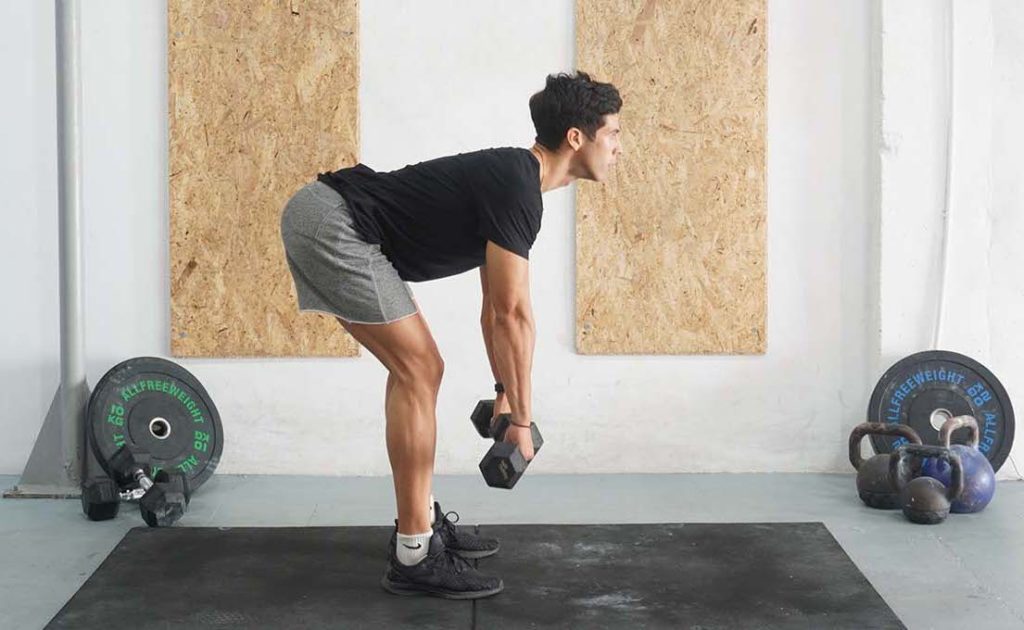

How to do it:
- Grab a pair of dumbbells and stand tall with your arms straight, the weights in front of your thighs, and palms facing back.
- Bring your shoulders back and have your feet at a shoulder-width distance with the toes pointing slightly out.
- Inhale and lean your torso forward while bringing your butt back. Doing so is necessary for loading your hamstrings and keeping your back neutral.
- Lower the dumbbells in a straight line until they are at mid-shin level (lower legs) or slightly lower. Your knees should remain slightly bent from start to finish.
- Return to a standing position by driving your hips forward. Exhale at the top.
- Inhale again and repeat
Related article: 10 of the Best Exercises for a Heart-Shaped Butt
6. Single Leg Glute Bridge
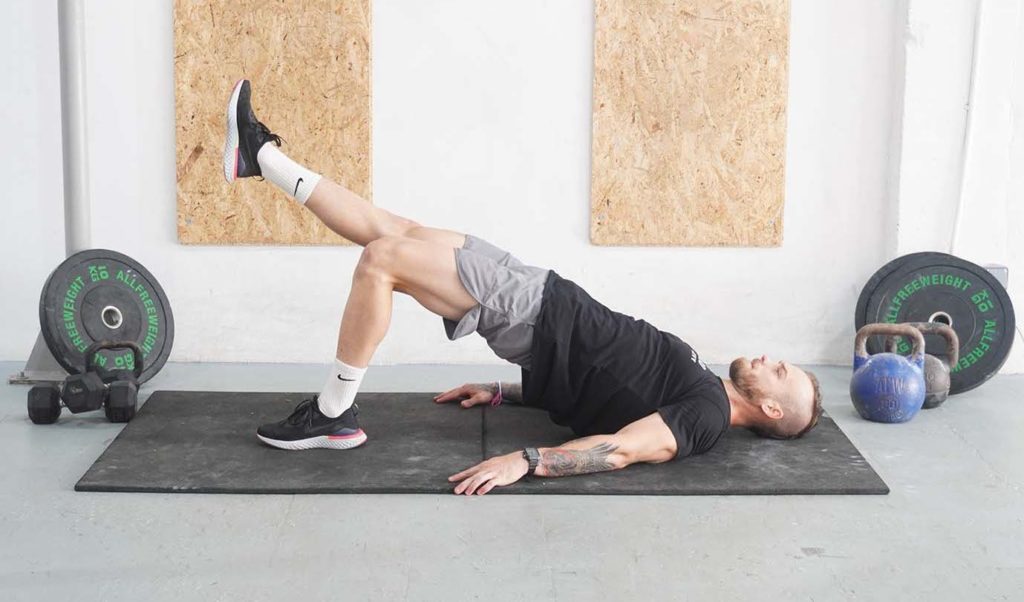

How to do it:
- Place an exercise mat on the ground and lie down.
- Bend your knees and plant your feet flat on the floor.
- Bring your shoulders back, position your arms to your sides, and have your palms flat on the ground for balance.
- Engage your abs, take a breath, and extend your left leg in the air.
- Push through your right heel to extend your hips. Squeeze your glute at the top and hold for a moment.
- Lower your hips to the floor as you exhale.
- Inhale again and repeat.
- Once finished training one side, lift your right leg in the air and repeat.
You can perform the glute bridge with both feet on the ground if you can’t support yourself on one side. Doing so is beneficial for activating the gluteus maximus.
In contrast, more advanced folks can place a dumbbell, kettlebell, or weight plate over their hips to increase exercise difficulty.
Related article: 10 Exercises and an Inner Thigh Workout to Tone and Sculpt
7. Banded Lateral Walks
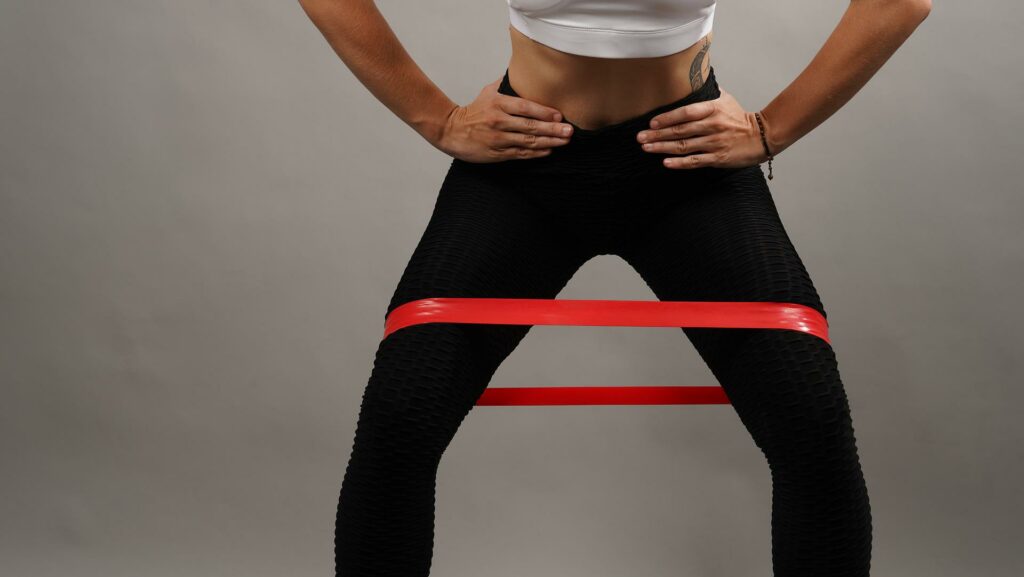

How to do it:
- Loop a resistance band over your thighs (just over the knees) or ankles and have your feet shoulder-width apart.
- Bring your shoulders back, engage your abs, and hold your hands in front of your chest.
- Take a breath and step to your right.
- Bring your left foot to the right and exhale.
- Inhale again and step to the right again.
- Take several more steps to the right and switch direction, repeating for the same number of reps.
Related article: 10 Exercises to Turn Your Square Butt into a Round Behind
8. Sumo Deadlift
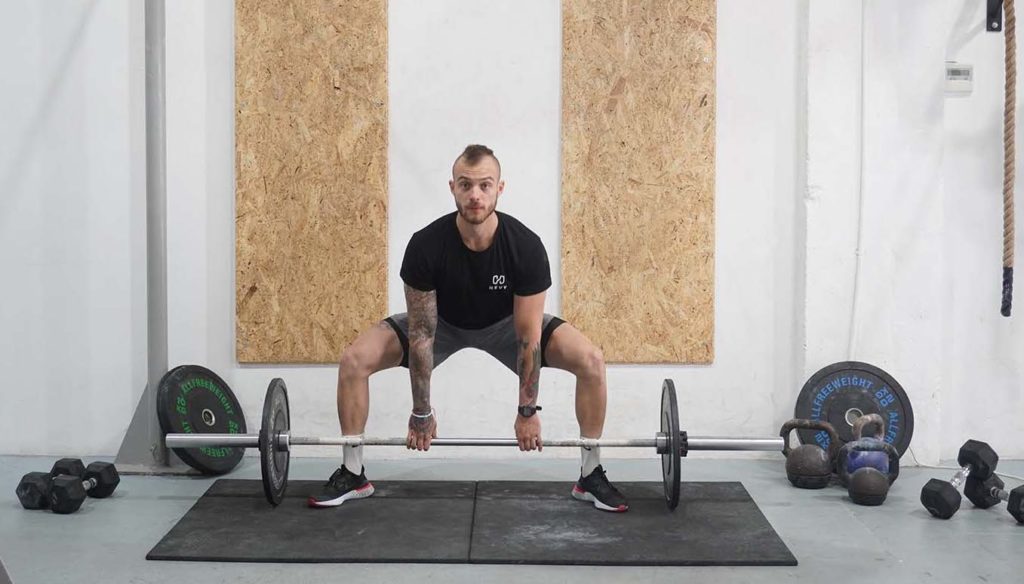

How to do it:
- Load a barbell and stand in front of it.
- Spread your feet more than shoulder-width apart, with your toes pointing slightly out. Keep your knees in line with your toes.
- Your shins should be an inch or two from the bar.
- Bring your hips back and grab the bar with an even overhand grip. Have your hands a few inches apart.
- Retract your shoulder blades and put your shins against the bar.
- Take a breath and pull the barbell in a straight line by pushing through your heels and extending your hips.
- Hold the top position for a moment and lower the barbell in a straight line.
- Repeat.
Related article: Best Leg Workouts and Exercises for a Strong Lower Body
9. Clam Shells
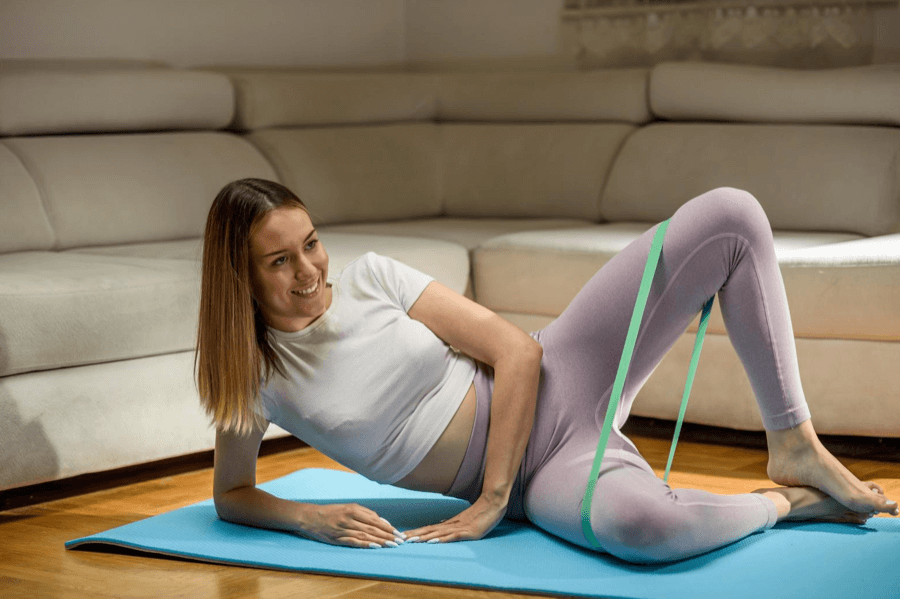

How to do it:
- Lie on your side, stack your legs, and keep your feet together.
- Engage your abs and take a breath.
- Lift your top knee toward the ceiling in one smooth motion.
- Hold for a moment and lower your knee as you exhale.
- Once finished, flip to your other side and do the same number of reps for your other leg.
You can wrap a mini band over your thighs to increase the resistance and make the exercise more challenging.
10. Curtsy Lunge (Dumbbell)
How to do it:
- Stand tall with your feet close together, legs straight, abs engaged, and arms to your sides.
- Inhale and bring your right foot back in a semi-circle and around your front leg.
- Position the ball of the foot on the floor and descend into a lunge by bending your right knee first.
- Simultaneously bring your arms in front of your chest for balance, squat as low as you can, hold for a moment, and press up.
- Bring your right foot to its starting position and exhale.
- Inhale again and bring your left foot back in the same way.
- Alternate until you’re done.
Two Upper Glute Workout Plans
1. Upper Glute Training Plan
| Exercise | Sets | Reps | Rest Period |
| Lateral Leg Raises | 3 | 12-15 per side | 1.5-2 minutes |
| Banded Lateral Walks | 3 | 10-15 per direction | 1-5-2 minutes |
| Clam Shells | 2-3 | 12 to 20 per side | 1-1.5 minutes |
Find this training plan on the Hevy app; click here and begin to track your workouts.
2. Fitness Plan to Develop The Whole Glute Region
| Exercise | Sets | Reps | Rest Period |
| Hip Thrust | 3 | 5-8 | 2-3.5 minutes |
| Bulgarian Split Squats | 3 | 10-12 per leg | 1.5-2 minutes |
| Lateral Lunge | 3 | 20-24 total | 1.5-2 minutes |
Find this training plan on the Hevy app; click here and begin to track your workouts.
Keeping a log of each workout can be helpful when growing your glutes. Using an app like Hevy can help you log your progress and see how you are improving over time.
Hevy Workout Tracker
Create your own upper glute workout with Hevy, and track your progress. Join +2M athletes.



For Personal Trainers
Personal trainer software to build workout programs for your clients, and track their progress.



Related articles:
- 3 Day Split Workout – The Complete Guide (2022)
- Push Pull Legs (PPL) – The Ultimate Workout Program Guide
- Free Workout Plans for Every Fitness Level
- Cardio Legs Workout: 8 Exercises for Muscle Growth and Endurance
Final Thoughts
There you have it: a list of ten movements for the glutes. Each exercise offers unique benefits, and you should combine them into a routine you enjoy and can do consistently.
You can also include some of these movements in your leg workouts. For instance, do squats and other leg movements before proceeding to clam shells, lateral leg raises, and similar.
Banded lateral walks are also helpful; you can do them to warm up your hips and lower body before training.
Some of the best exercises to train the upper glutes also work other muscles in the lower body, including the quadriceps and hamstrings. Good examples include hip thrusts and Bulgarian split squats.
Upper Workout (Frequently Asked Questions)
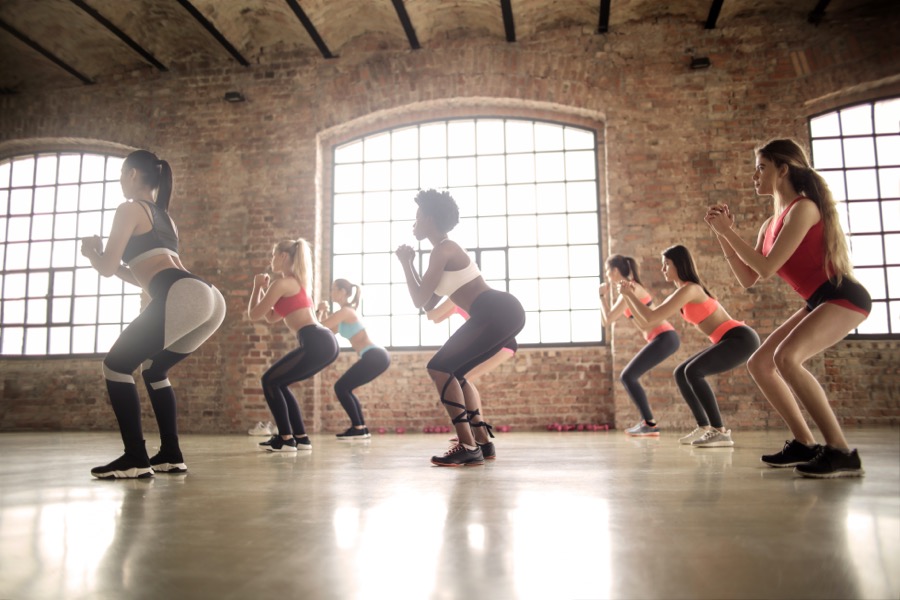

1. How to get a shelf on the upper glutes?
The best way to target the lower back and upper glutes, improving your shelf butt, is to perform the glute exercises discussed above. You can pick from the list and put together simple routines emphasizing specific glute muscles or targeting the entire butt.
2. What is the most effective glute workout?
There isn’t a single ‘best’ workout for the upper glutes. Fitness is about stimulating your muscles, increasing the difficulty of your workouts, and being consistent.
So long as you cover the essentials, any workout can lead to impressive butt growth.
3. Why won’t my upper glutes grow?
One of the biggest reasons the area doesn’t develop is that you’re not doing glute exercises specific to the medius and minimus.
Another reason could be that you’re not eating enough and not getting the protein your body needs to build the glute muscles.
4. Should I train my glutes every day?
The glutes are like most other skeletal muscles. You must train the butt and lower back with various exercises but give yourself time to recover. Daily training might seem the best way to make optimal progress, but that isn’t the case.
One workout every three to four days will provide the stimulus for optimal growth.
5. How do you target all three glutes?
The best glute exercises for the entire area include the hip thrust, sumo deadlift, Romanian deadlift, and Bulgarian split squat. Do these exercises, and your glutes will become noticeably rounder and firmer.
6. How long does it take to grow glutes?
How quickly you can build muscle will depend on your training plan, diet, consistency, fitness level, and workout quality.
Most beginners can see noticeable butt growth and impressive strength gain in as little as six months of consistent training.


